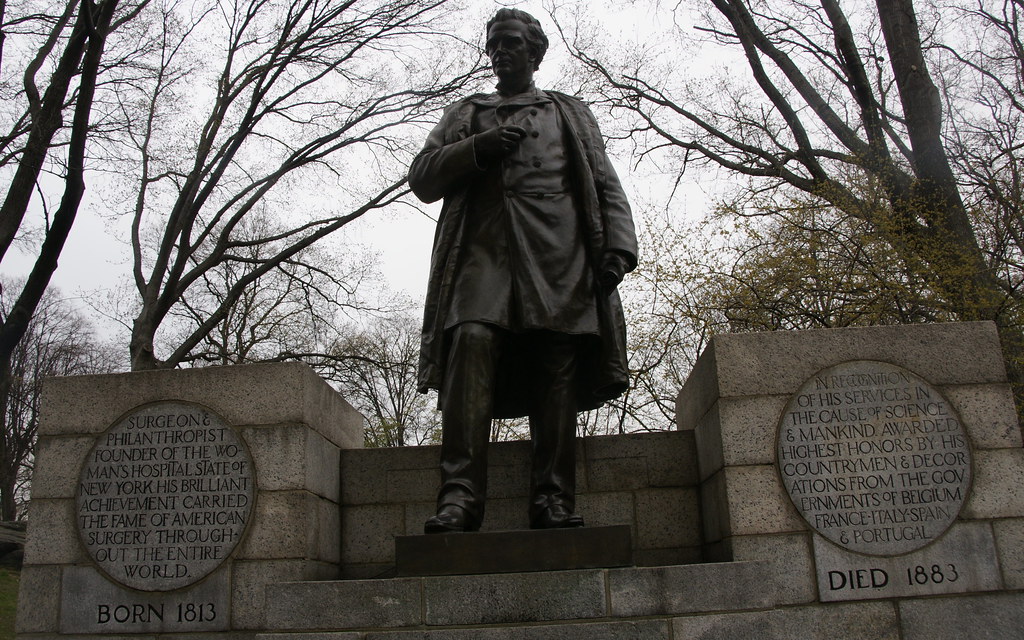
Medicine, and the academic research that underlies it, should be free of racial prejudice. Anyone should be able to receive the best treatment available for a given condition regardless of what they look like or the demographic information in their chart. The scientific community goes out of its way to assert that medical research is apolitical and unbiased. Indeed, it is tempting to laud larger-than-life figures who paved the way for modern medical breakthroughs and to judge their achievements by “scientific merit” alone (the concept of “scientific merit” is also inherently biased, due to the fact that the standards for it are largely set by white men, but for the sake of this argument, let’s pretend that it exists as a purely logical, unprejudiced idea).
However, to do so is to erase the true history of medicine and medical research. The fact is that many of the lifesaving medical techniques and research procedures we take for granted now came about through the exploitation of Black bodies. From the very beginning, medical research and those who are credited with its advancement have been deeply entwined with racism, and dismissing this association ignores the suffering of the Black patients and test subjects who made modern medicine possible. Let’s take a closer look at some examples:
HeLa cells

We’ll start with one you may already know, thanks to the book and film The Immortal Life of Henrietta Lacks. Henrietta Lacks was a Black woman suffering from severe cervical cancer in the 1950s, when hospitals were largely legally segregated and the quality of care available to Black patients was much lower than that accessible by whites. During her treatment at Johns Hopkins Hospital, Mrs. Lacks underwent a biopsy of her tumor, a part of which was given to the lab of Dr. George Gey without Mrs. Lacks’ knowledge or consent. Whereas cells from other patient tissue samples died when researchers tried to grow them in the lab, the cells from Mrs. Lacks’ tumor were able to grow and divide almost indefinitely in a petri dish, making them ideal for studying cancer. These “immortal” cells, nicknamed HeLa cells, were distributed to labs around the world and have since been involved in billions of dollars worth of cancer research. They’re available online for $400 and it’s hard to find a biologist who studies mammalian cells who hasn’t worked with HeLa cells at some point. However, while Johns Hopkins and other medical research centers praise Mrs. Lacks’ legacy, they conveniently gloss over the fact that Mrs. Lacks died of her cancer without ever seeing any of the money that was made off of her cells. In this case, a literal part of a poor Black woman’s body was taken without her consent, monetized, and used to develop healthcare that was often denied to members of the Black community.
James Marion Sims and the advent of “modern gynecology”

James Marion Sims was a physician and gynecologist in the mid-1800s, and is credited with the invention of the speculum as well as surgical techniques to repair vesicovaginal fistulas, which are debilitating injuries to the pelvic floor. His surgical technique was developed through experiments on enslaved women, often without anesthesia. Sims himself wrote that his “patients,” including three women named Lucy, Anarcha, and Betsey, consented to these procedures, but this supposed consent is not documented and doesn’t take into account the power dynamic of a white doctor operating on Black enslaved women. Further, Sims’ decision to not use anesthesia while perfecting his technique on these women was rooted in the racist and false stereotype that Black people feel pain less than white people, and he later anesthetized his white patients while performing his “perfected” surgeries. Although I think everyone who’s ever been to the gynecologist understands the importance of Sims’ medical breakthroughs, it is problematic that he has been praised as the “father of modern gynecology” with a (recently removed) statue in Central Park, while the women he performed brutal experiments on (with questionable consent) are relegated to footnotes in history.
There are countless other documented examples of Black people in the U.S. being exploited, without their consent and sometimes without their knowledge, for the advancement of medicine (for more reading, I recommend this article about the Tuskegee syphilis study and this article on the broader history of medical exploitation of Black people). But what does this mean for us as patrons of a medical system that now calls itself unbiased and racially neutral?
Unfortunately, we know that these ideals are not true. In the American medical system, Black patients are significantly less likely than white patients to receive pain medication in the emergency room. A nursing textbook, only pulled from shelves in 2017, stereotyped patients based on racial and religious identities. A study of white medical students found that over 40% of them believed that “Black people’s skin is thicker than white people’s,” a statement that is in no way founded in science. If we look at these disparities in the context of medical history – a history of exploiting Black people to develop medical procedures that disproportionately benefit white people – it is easier to understand the cost of advancements in medicine and the origin of the systemic racism that still pervades the medical and academic fields. This understanding can help towards identifying medical discrimination and ultimately rectifying and preventing it. Further, for medical researchers like myself, it is important to remember where we come from. We may stand on the shoulders of giants, but they themselves stood on the shoulders of uncredited and exploited Black Americans. It’s our job to learn from this painful and deeply racist past to actively move towards a system in which all patients are treated equally.
Peer edited by Connor LaMontagne